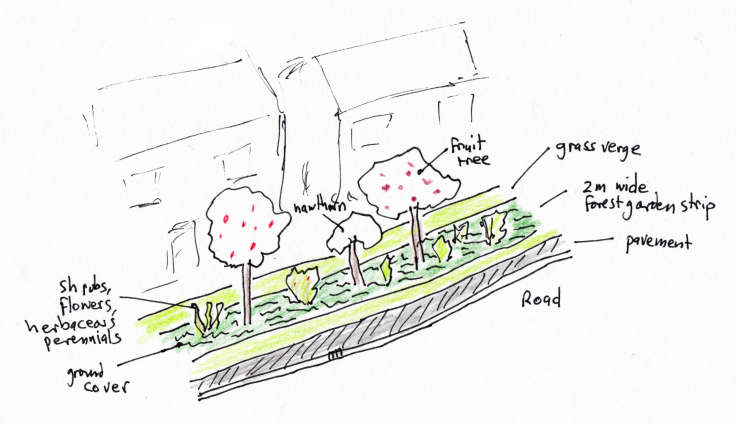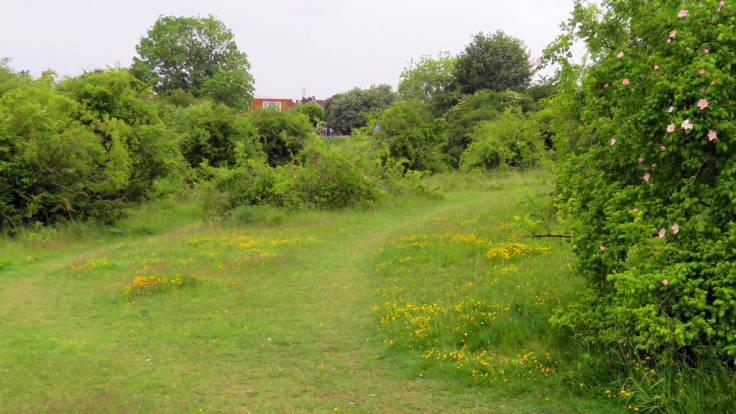
The Wild Food Corridor, leading to the woodland, visualised neatly with colour pencils
Involving people in the creation of wildlife habitat in public spaces whilst simultaneously providing a harvest is a way to focus minds on our existential environmental threats
We need to protect and restore our wildlife whilst dramatically reducing our Greenhouse Gas emissions, which means sustainable food production on a global scale, something that can only happen with public awareness, understanding and support.
Wildlife and edible gardening in public spaces creates habitat for wildlife, crops for people and, just as importantly, it can foster this understanding of where our food comes from, whilst connecting different parts of society with nature.
My proposal is to facilitate community groups and schools creating forest garden strips on public land, leading to and joining wild spaces. That is the essence of Wild Food Corridors.

Greenvale urban scub/grassland, an example of managed wildlife and recreational habitat, photo by Martin Allen
I’m currently putting together just such a proposal for a site in Aberystwyth, and the feedback from the council, conservationist, community centre and primary school has been overwhelmingly positive.
Forest gardening is ideally suited to such an endeavour, because it’s low maintenance, productive and sustainable, with the whole focus on creating wildlife friendly habitats for pollinators and predators, natural fertility and a living ground cover.
There will be a balance of native and non-native species in all the seven layers, including:
- Hawthorn (native and good fruiting species), hazel and willow
- Apple, pear, plum and cherry trees, on suitable rootstock
- Sterile Bocking 14 comfrey, for chop and drop mulching
- Ground cover such as Alefoot, Periwinkle, Apple Mint, Horse Mint
- Fruit bushes such as gooseberry, raspberry, currants, thornless bramble
- All-year round flowering herbaceous perennials for pollinators, such as Meadowsweet, Sweet Cicely, Cow Parsley, Dandelion
At the very heart of the project is the idea of bringing people and nature together, of involving people in the production of food and protection of wildlife.
Obviously, I have taken much inspiration from other people: Sara Venn, found of Edible Bristol, the Incredible Edible movement, The People’s Orchard project in Pembrokeshire, Martin Allen (@BotanicalMartin) whose photo is featured above, my forest gardening neighbour Dan and many more. Thank you all 🙂